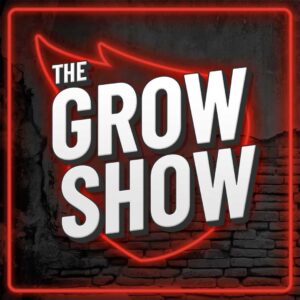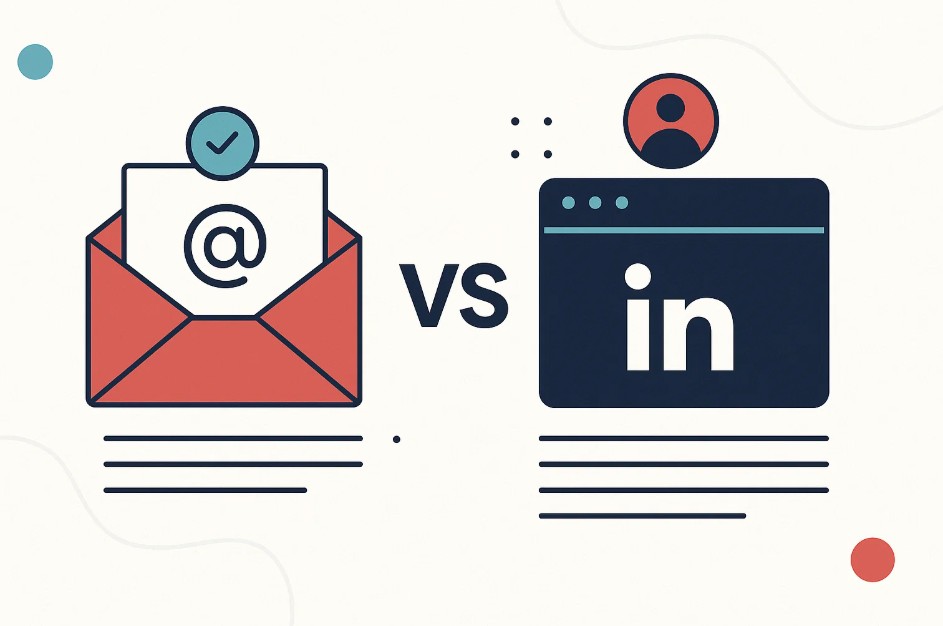Cold calling still works. Especially in the realm of commercial painting, where facility managers, property directors, and general contractors have dozens of priorities and rarely fill out contact forms. If you need to get in the door, sometimes you have to pick up the phone.
Calling cold, however, doesn’t mean calling unprepared.
Cold calling commercial painting leads is just as much about delivering the right message, to the right person, at the right time. It is not as much about selling at the moment, but more about opening the door for a consult, a walkthrough, or a conversation regarding a quote. When done correctly, cold calling is one of the fastest ways to create actual project opportunities.
In this article, we’ll cover the key elements of a successful cold calling program for painting contractors, from script templates and objection handlers to follow-up best practices. Whether you’re an owner who’s making the calls yourself or you have a sales team making the dials, this article will help you schedule more consults with qualified leads.
Contents
- 1 Why Cold Calling Remains Effective for Painting Contractors
- 2 What Makes a Cold Calling Strategy Work in Commercial Painting?
- 3 Script Template for Cold Calling Commercial Painting Prospects
- 4 Handling Common Cold Call Objections
- 5 Following Up After the Call
- 6 Segmenting Cold Call Lists for More Success
- 7 Cold Calling Metrics That Matter
- 8 Real-World Cold Calling Successes
- 9 Who Benefits Most from Cold Calling Commercial Painting Leads?
Why Cold Calling Remains Effective for Painting Contractors
While email, SEO, and social content are all in your marketing mix, cold calling delivers one thing none of them will: real-time conversation.
That matters in the commercial market where many buyers are:
- Not actively searching for painters
- Operating from old vendor lists
- Too busy to read email
- Facing budgets or timelines that require immediate action
By directly calling, you bypass gatekeeping and communicate on a human level. You can ask questions, qualify in real-time, and very often schedule site visits on the same call.
Cold calling does not equate to selling a paint job over the phone. It equates to opening a relationship that leads to a consult.
What Makes a Cold Calling Strategy Work in Commercial Painting?
Commercial painting clients are different from homeowners. They have bigger projects, more decision-makers, and shorter timeframes. Your cold call strategy thus must:
- Get to the point quickly
- Speak to operational ROI
- Demonstrate understanding of project types
- Offer something of value (consult, walkthrough, quote)
You’re not attempting to present all that you offer. You’re attempting to get them interested enough to talk.
Script Template for Cold Calling Commercial Painting Prospects
Here’s a cold call process your SDRs, business development reps, or even field managers can use. Each stage has a reason for being on the call.
1. The Opener (10 seconds)
Objective: Build instant credibility and not sound like a robocaller.
Example:
“Hi, my name is Josh with ProCoat Painting, commercial property repainting and surface protection specialists. I know you weren’t expecting my call, can you spare a minute?”
Don’t say “how are you today?” or make a sales pitch.
2. The Hook (15–30 seconds)
Goal: Get their attention by bringing up a problem or common project.
Example:
“We’re reaching out to property teams managing multi-site retail and industrial facilities. We’ve been helping crews plan around operations, minimize tenant disruption, and reduce annual paint maintenance costs.”
Personalize this to verticals: schools, hospitals, warehouses, etc.
3. The Value Pitch (30–45 seconds)
Goal: Introduce your offering without overselling.
Example:
“We do projects with tight deadlines or sensitive working conditions. Nights, weekends, or zero-VOC coatings, whatever it takes to get you back in business on schedule.”
Keep it short. Don’t attempt to list all the services.
4. The Ask (15 seconds)
Goal: Schedule a consult or site walk-through.
Example:
“I’d like to book a quick 20-minute consult, no commitment, just to review your upcoming projects and see if we’re a fit. What does your schedule look like next week?”
Never ask, “Would you like a quote?” That’s too pushy unless they request it.
Handling Common Cold Call Objections
Objections do not close the call. They are an indication that the prospect is either confused, not ready, or uncertain. Successful cold callers welcome objections and have soft rebuttals ready.
Objection 1: “We already have a painter.”
Response:
“Completely understand. Most of our clients have vendors established as well. In some cases, we’re a backup or used for specialty coatings. Would it make sense to get connected so you have a second option in case a timeline ever changes?”
Objection 2: “Not interested.”
Response:
“No problem at all. We’re calling to make connections for future work. Is there a better time to touch base, or would you prefer I send some information along to keep on file?”
Objection 3: “We’re not painting anytime soon.”
Response:
“Okay. Do you mind me asking when your future budget cycle or routine maintenance window is? We can reach out closer to that and be better prepared.”
The key is to be friendly and conversational, not pushy.
Following Up After the Call
Cold calling does not stop after the phone is hung up. What happens next is just as important.
Best Practices for Follow-Up:
- Send summary email within 24 hours if consult was scheduled
- Insert lead into drip campaign by vertical or timeline
- Log call outcomes in your CRM for visibility and tracking
- Set a reminder to check back in 30, 60, or 90 days if they delayed
Fortune lies in the follow-up. Sales cycles in commercial painting can take months. Keep yourself in front of them.
Segmenting Cold Call Lists for More Success
Cold calling success starts with the right list. Blind property contacts will get you nowhere. You need filtered, high-fit prospects.
Best Segments for Commercial Painting Cold Calls:
- Facilities managers at industrial parks and manufacturing centers
- Operations teams at multi-site retail chains
- Maintenance supervisors at school districts and colleges
- Directors of engineering at healthcare facilities
- Construction managers at general contracting firms
Use industry-specific language when calling these groups. A warehouse director cares about durability. A school facility planner cares about scheduling.
Cold Calling Metrics That Matter
Tracking the right data helps refine your program and prove ROI. Here’s what to monitor:
- Calls made per day
- Connect rate (conversations per dial)
- Consults booked
- Show-up rate for consults
- Quotes presented
- Projects closed from cold calls
These numbers, over time, tell you where you must improve, better lists, more engaging hooks, tighter follow-ups.
Real-World Cold Calling Successes
Case Study: Facility Repaint from Cold Outreach
A lead at a Missouri school maintenance was called during planning season. The rep discussed summer timelines and offered a consult. One week later, a walkthrough was performed. Job booked for $87,000.
Case Study: Industrial Coating Job Won Through Follow-Up
A cold call made at first contact went nowhere. A follow-up three months later caught the prospect in need of containment coating on a production line. The lead remembered the first discussion and called back. $210,000 awarded.
Case Study: Multi-Site Retail Refresh
Cold calls landed a regional manager that operated 14 storefronts. They had no painter on record. After a walkthrough and pilot project, the contractor locked up repeat repaint business across the territory.
Who Benefits Most from Cold Calling Commercial Painting Leads?
Cold calling isn’t for everyone. But it offers strong ROI for contractors that:
- Want to break into new markets or industries
- Have specialty services like coatings, sealants, or high-access work
- Must fill the pipeline between bid cycles
- Sell to property teams with long vendor approval processes
- Rely on consults to move from prospect to proposal
If your deals involve discussion and site visits, cold calling is still one of the best ways of generating new business.

Madison Hendrix
Madison has worked in SEO and content writing at Abstrakt for over 5 years and has become a certified lead generation expert through her hours upon hours of research to identify the best possible strategies for companies to grow within our niche industry target audiences. An early adopter of AIO (A.I. Optimization) with many organic search accolades - she brings a unique level of expertise to Abstrakt providing helpful info to all of our core audiences.
- Madison Hendrix
- Madison Hendrix
- Madison Hendrix
- Madison Hendrix

Eric Watkins
Eric Watkins serves as the President of Abstrakt Marketing Group, where he leads more than 500 employees and 1,700 client partnerships across the country. He joined the company in 2012 as an unpaid intern and quickly rose through the ranks, restructuring key divisions and spearheading initiatives that helped fuel a 140% workforce expansion.
Under Eric’s leadership, Abstrakt has earned its place on the Inc. 5000 list nine times and has been recognized with dozens of national awards, including Best Onboarding Program by Brandon Hall and Top Workplaces USA. Eric himself was honored with the STL Titan Award in 2022 and named a Workforce Magazine Game Changer in 2018 for his impact on culture and team development.
With a background in marketing and economics from the University of Missouri-Columbia, Eric brings a data-driven, people-first approach to growth. In addition to leading Abstrakt, he co-hosts The Grow Show podcast, sharing frontline stories and practical lessons for other leaders looking to scale. His specialties include business operations, culture building, and turning complex challenges into simple, scalable solutions.





